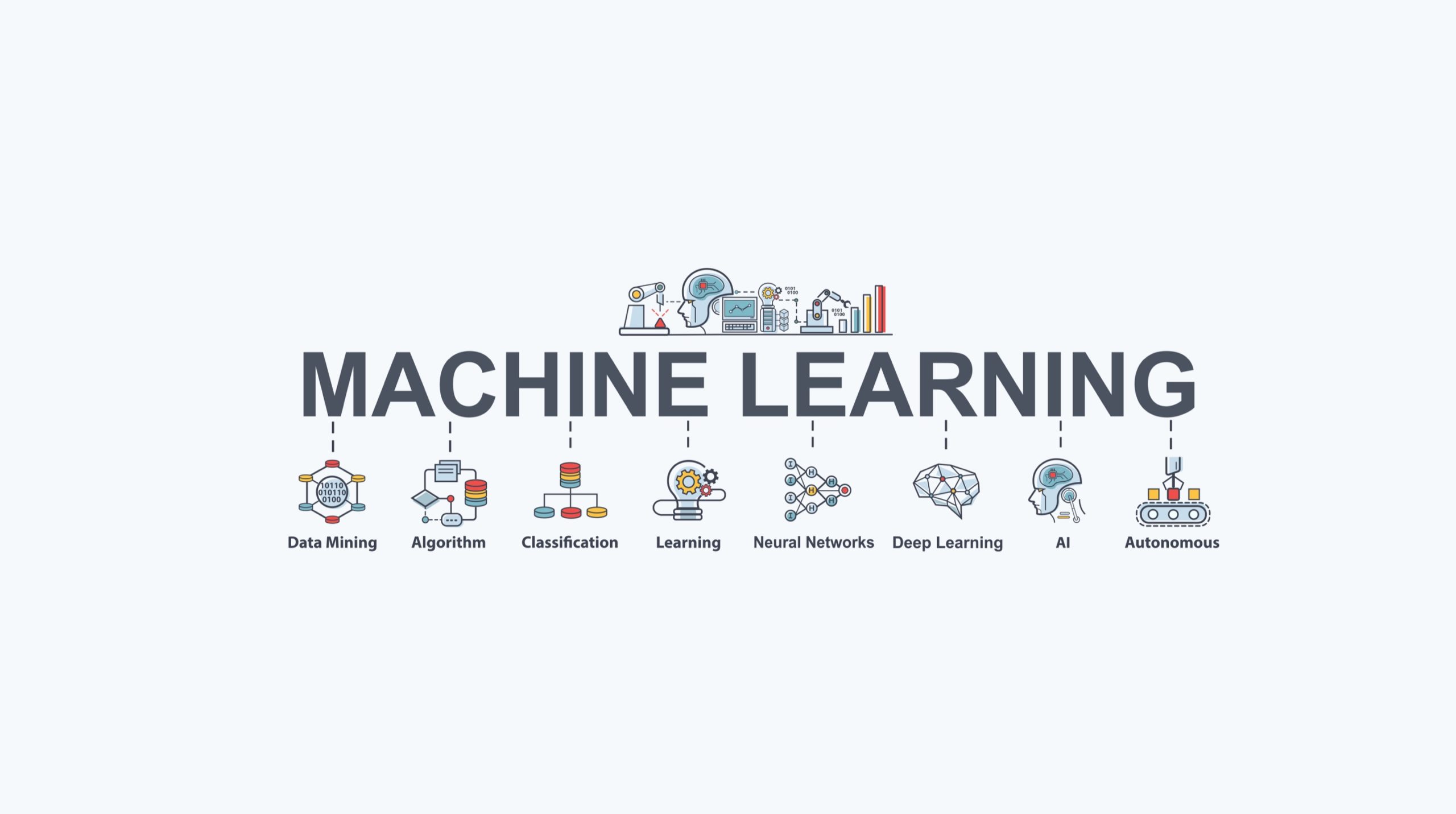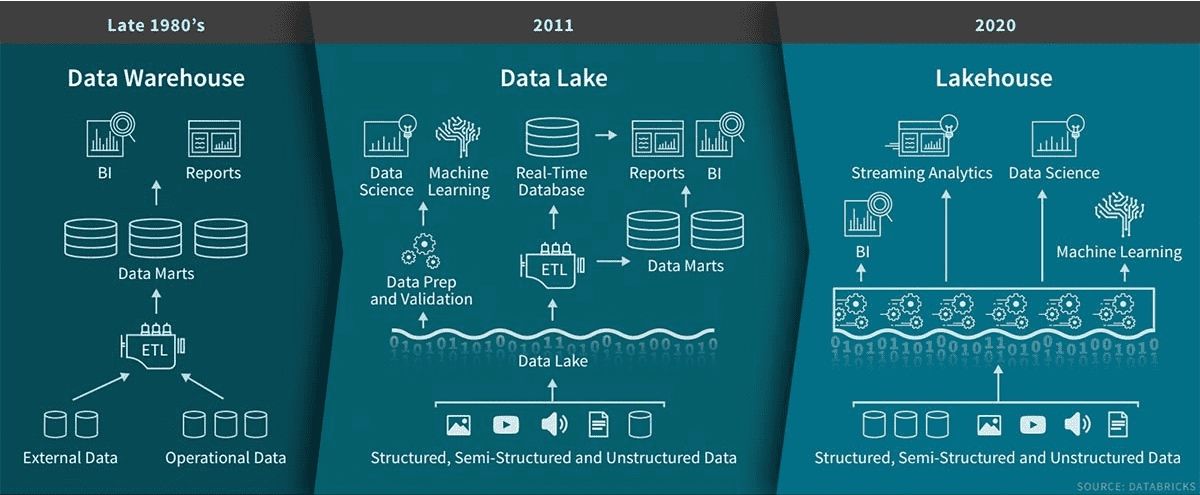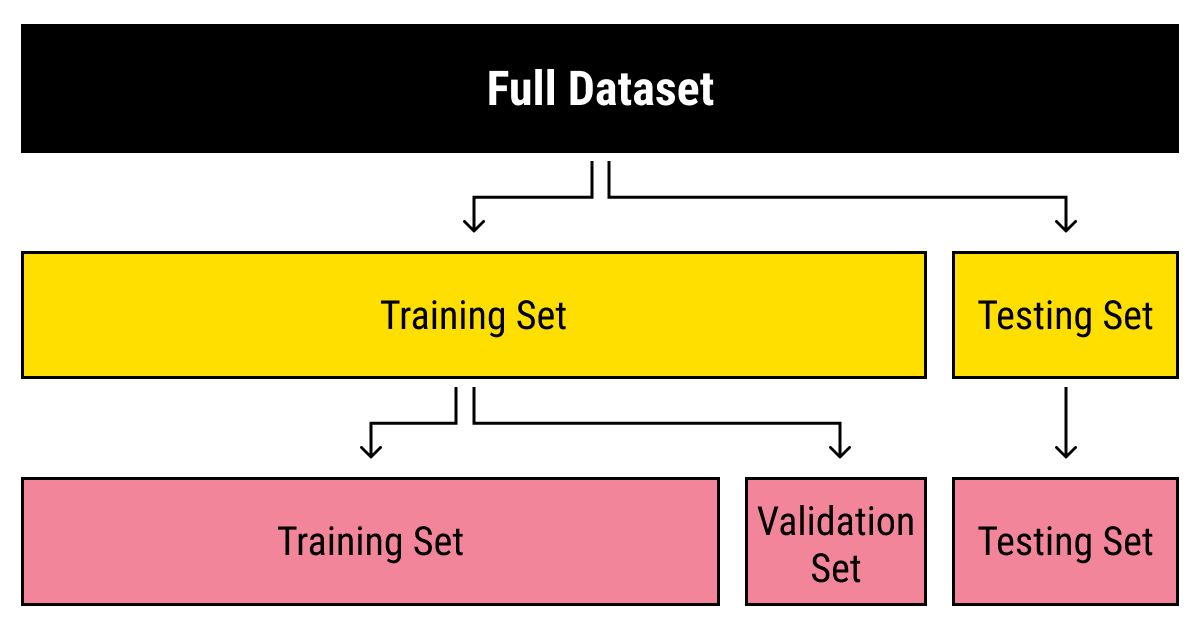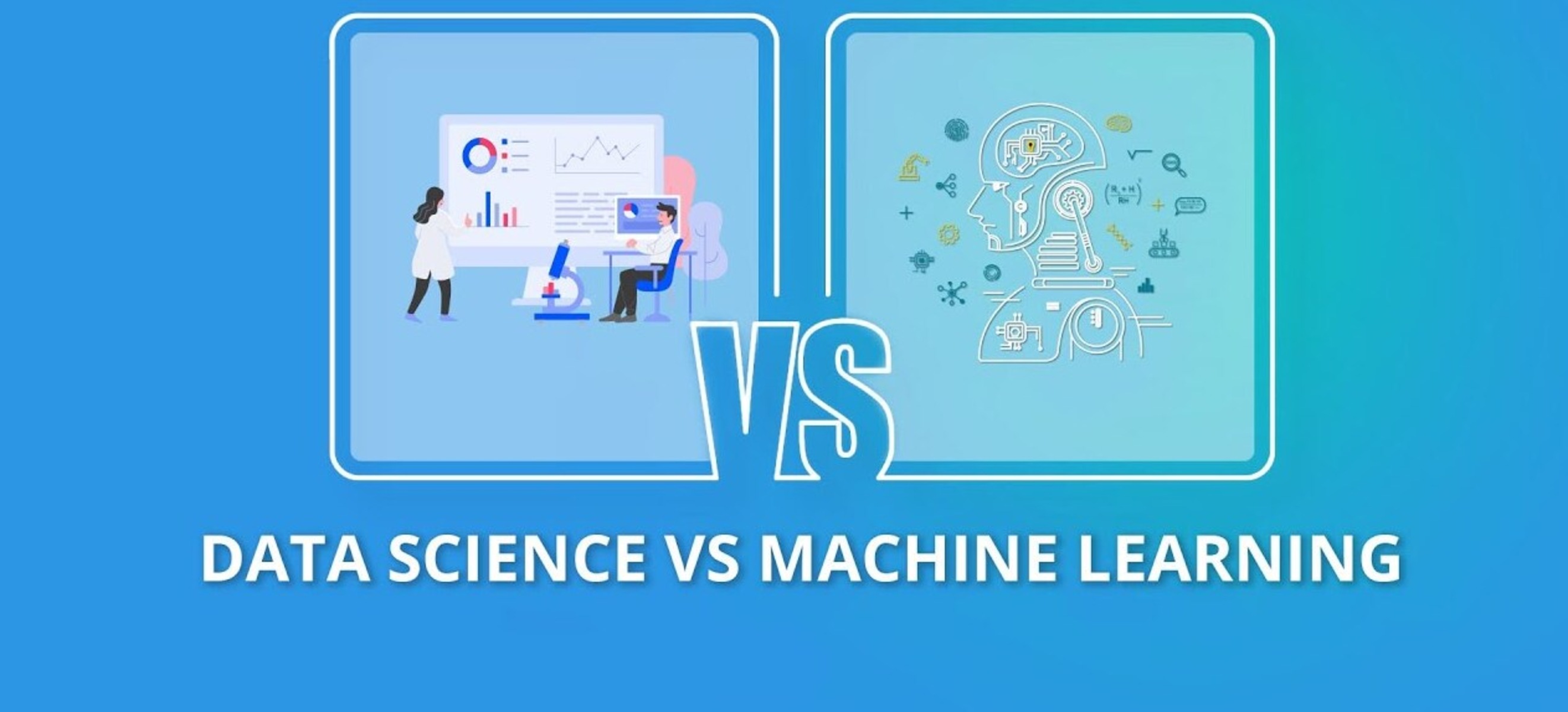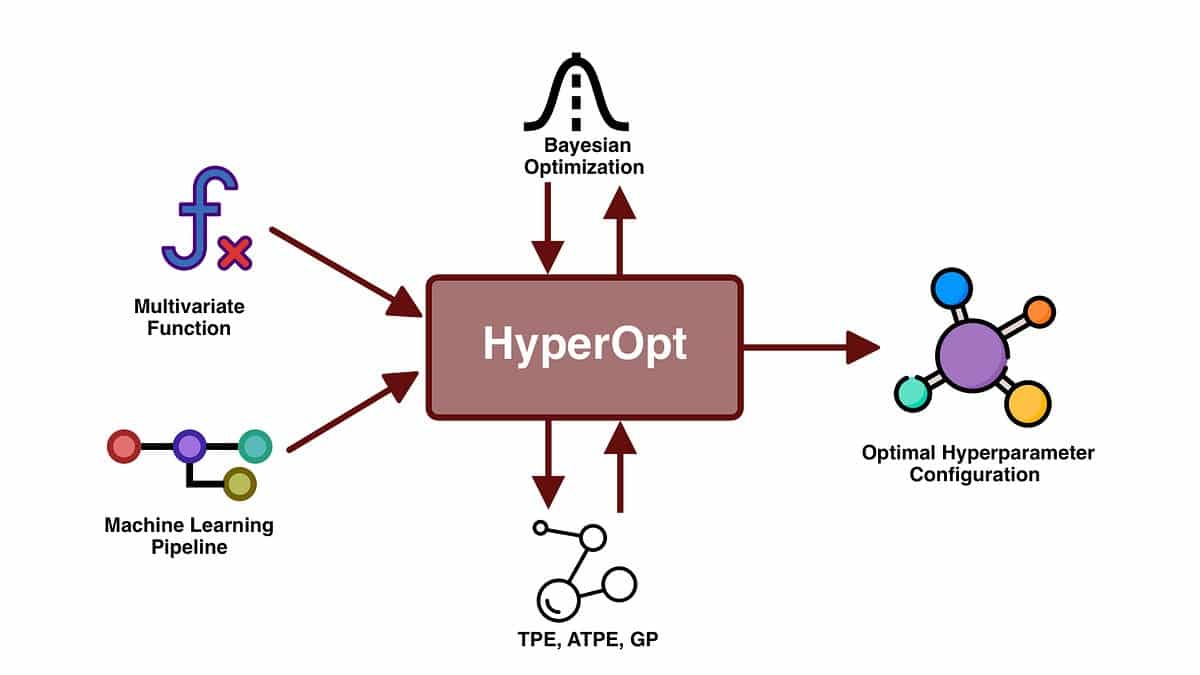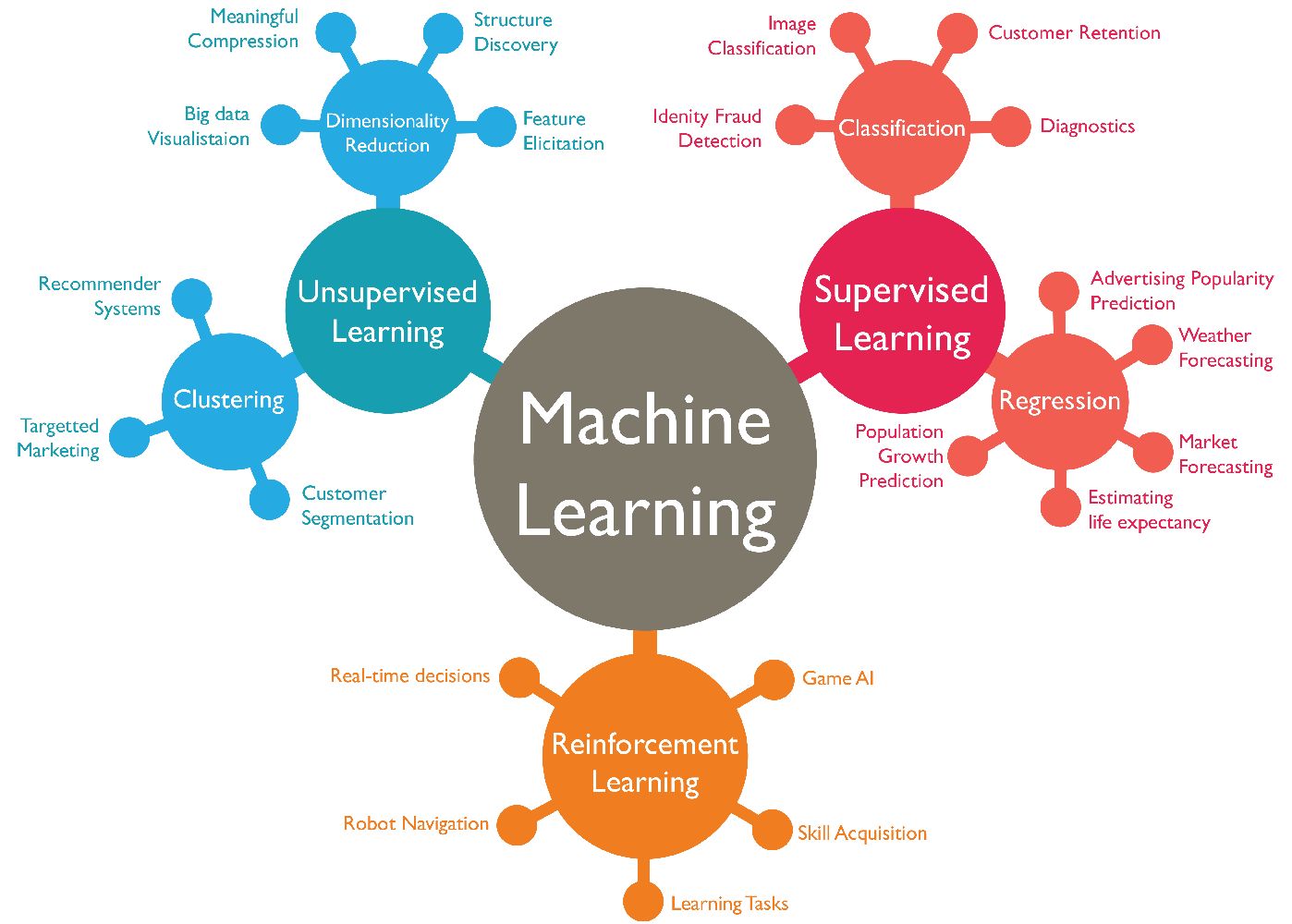Introduction
Welcome to the world of machine learning platforms! In today’s rapidly evolving technological landscape, machine learning has emerged as a powerful tool for businesses and organizations across various industries. What used to be a complex and specialized domain is now becoming more accessible and user-friendly, thanks to the advancement of machine learning platforms.
Machine learning platforms provide a framework and infrastructure for developers, data scientists, and businesses to build, deploy, and manage machine learning models. These platforms offer a range of tools, libraries, and resources that simplify the entire machine learning workflow, from data preprocessing to model training and deployment.
With the growing demand for data-driven insights and predictive analytics, the use of machine learning platforms has become imperative for businesses aiming to stay competitive in the digital age. These platforms enable organizations to leverage their vast amounts of data to uncover valuable insights, automate decision-making processes, and deliver personalized user experiences.
One of the key advantages of machine learning platforms is their ability to democratize machine learning. In the past, developing and deploying machine learning models required advanced technical skills and expertise. However, modern machine learning platforms provide intuitive interfaces, drag-and-drop functionality, and pre-built models that allow even non-technical users to harness the power of machine learning.
Moreover, machine learning platforms enable collaboration and knowledge sharing among team members. Data scientists, developers, and domain experts can work together seamlessly within the platform, accelerating the model development process and fostering innovation.
In this article, we will explore the world of machine learning platforms in depth. We will discuss their definition, the reasons why businesses should use them, key features to look for, and the benefits they offer. Furthermore, we will provide examples of popular machine learning platforms and provide guidance on how to choose the right platform for your specific needs. Lastly, we will address some of the challenges and limitations that organizations may encounter when adopting machine learning platforms.
Definition of Machine Learning Platforms
Machine learning platforms are comprehensive software frameworks or tools that facilitate the development, deployment, and management of machine learning models. These platforms provide a systematic approach to building and operationalizing machine learning solutions, allowing organizations to leverage the power of data-driven insights and predictive analytics.
At their core, machine learning platforms offer a set of tools, libraries, and algorithms that enable users to preprocess data, train models, and make predictions on new data. These platforms typically include a visual interface that simplifies the model development process, making it accessible to both technical and non-technical users.
Machine learning platforms also provide integration capabilities, allowing users to connect to various data sources, such as databases, cloud storage, or APIs. This enables organizations to leverage their existing data infrastructure and easily access the necessary data for building and training machine learning models.
Furthermore, machine learning platforms often include features that support the entire machine learning pipeline, including data exploration and visualization, feature engineering, model selection and tuning, and model deployment. This ensures a seamless and efficient workflow from data ingestion to delivering actionable insights.
These platforms typically utilize a combination of traditional machine learning techniques, such as linear regression or decision trees, and advanced algorithms, such as deep learning or reinforcement learning. They also incorporate mechanisms for model evaluation and monitoring, enabling users to measure the performance and accuracy of their models and make improvements as needed.
Additionally, machine learning platforms often provide access to pre-trained models and reusable components, accelerating the development process and enabling users to leverage proven models for common use cases. This reduces the time and effort required to build and train models from scratch, allowing organizations to focus more on solving domain-specific problems.
Overall, machine learning platforms streamline the end-to-end process of developing machine learning models, from data preprocessing to model deployment. By providing a user-friendly interface, integration capabilities, and a wide range of functionalities, these platforms empower organizations to harness the power of machine learning and make data-driven decisions.
Why Use Machine Learning Platforms
Machine learning platforms offer numerous benefits and advantages that make them a valuable asset for businesses and organizations. Let’s explore some of the key reasons why you should consider using a machine learning platform:
- Efficiency: Machine learning platforms streamline the entire machine learning workflow, automating repetitive tasks and reducing the time and effort required for model development. These platforms provide a user-friendly interface, drag-and-drop functionality, and pre-built models, allowing users to focus more on solving business problems rather than spending hours on coding or data preprocessing.
- Accessibility: By abstracting away the complexities of machine learning, platforms make it accessible to a wider audience. Non-technical users with domain expertise can leverage these platforms to build and deploy models without the need for extensive programming or data science knowledge. This democratization of machine learning enables organizations to harness the power of data-driven insights across various departments.
- Scalability: Machine learning platforms offer scalability, allowing organizations to handle large datasets and seamlessly scale their models as the data volume and complexity increase. These platforms utilize distributed computing and parallel processing techniques, enabling organizations to process and analyze massive amounts of data efficiently.
- Collaboration: Machine learning platforms foster collaboration among team members by providing version control, sharing functionalities, and real-time collaboration tools. Data scientists, developers, and domain experts can work together within the platform, leveraging each other’s expertise and accelerating model development and deployment processes.
- Experimentation and Iteration: With machine learning platforms, organizations can easily experiment with different algorithms, parameter settings, and feature combinations. This allows for rapid iteration and comparison of models, enabling users to fine-tune their models and improve their accuracy and performance continuously. The ability to run multiple experiments in parallel and track the results makes it easier to optimize and optimize models effectively.
- Integration and Deployment: Machine learning platforms provide seamless integration with existing data infrastructure, allowing organizations to connect to various data sources, such as databases, cloud storage, or APIs. These platforms also support deployment of models into production environments, ensuring that the insights generated by machine learning models can be used to drive actionable decisions and automate business processes.
Overall, machine learning platforms offer efficiency, accessibility, scalability, collaboration, and experimentation benefits, empowering organizations to unlock the full potential of their data and leverage machine learning to gain a competitive edge in the market.
Key Features of Machine Learning Platforms
Machine learning platforms come equipped with a range of features that facilitate the development, deployment, and management of machine learning models. These features are designed to simplify and enhance the machine learning workflow. Let’s explore some of the key features that make machine learning platforms stand out:
- Data Preprocessing: Machine learning platforms provide tools for handling and preparing data for analysis. These platforms offer functionalities such as data cleaning, normalization, feature selection, and transformation. They also support data exploration and visualization techniques, allowing users to gain insights into the dataset and identify patterns and relationships.
- Model Development: Machine learning platforms offer a variety of machine learning algorithms and techniques to build and train models. These platforms provide a wide range of algorithms, including both traditional machine learning algorithms like linear regression, decision trees, and support vector machines, as well as advanced techniques like deep learning and reinforcement learning. Users can experiment with different algorithms and tune hyperparameters to optimize model performance.
- Automation and AutoML: Many machine learning platforms come with automation capabilities and autoML (Automated Machine Learning) tools. These features automate the process of model selection, hyperparameter tuning, and feature engineering. AutoML techniques can help users with limited machine learning expertise to quickly build machine learning models without extensive manual intervention.
- Model Evaluation and Monitoring: Machine learning platforms provide mechanisms for evaluating and monitoring model performance. These platforms offer metrics such as accuracy, precision, recall, and F1 score to assess the quality of the models. They also allow users to track model performance over time and set up alerts for detecting anomalies or changes in model performance.
- Deployment and Serving: Machine learning platforms enable users to deploy trained models into production environments. These platforms provide tools for model packaging, serving, and integration with other systems or applications. They ensure that the insights generated by machine learning models can be accessed in real-time and incorporated into business processes or decision-making workflows.
- Model Interpretability and Explainability: Some machine learning platforms offer features for model interpretability and explainability, allowing users to gain insights into how the models make predictions. These platforms provide techniques such as feature importance analysis, partial dependence plots, and model summaries to help users understand the factors that contribute to model predictions.
- Collaboration and Version Control: Machine learning platforms facilitate collaboration among team members. They offer features for version control, allowing multiple users to work on the same project and keep track of changes. Moreover, these platforms provide functionalities to share models, datasets, and experiments, fostering a collaborative environment where team members can easily iterate and build upon each other’s work.
These key features enable organizations to efficiently and effectively develop, deploy, and manage machine learning models. By providing a comprehensive set of tools and functionalities, machine learning platforms empower users to leverage their data and generate valuable insights for better decision-making and improved business outcomes.
Benefits of Machine Learning Platforms
Machine learning platforms offer a wide range of benefits that can greatly impact businesses and organizations. Let’s explore some of the key advantages of using machine learning platforms:
- Improved Decision Making: Machine learning platforms enable organizations to make data-driven decisions by uncovering patterns, trends, and correlations in large datasets. These insights can provide a deeper understanding of customer behavior, market trends, and operational efficiencies, leading to more informed and strategic decision-making.
- Increased Efficiency and Productivity: Machine learning platforms automate repetitive tasks, streamline workflows, and reduce the time and effort required for model development. This increased efficiency allows organizations to focus on high-value activities and accelerate the speed of innovation. By automating processes like data preprocessing and feature engineering, machine learning platforms free up valuable time for data scientists and domain experts to focus on higher-level tasks.
- Cost Savings: Machine learning platforms can significantly reduce the cost of model development and deployment. These platforms provide pre-built models, libraries, and tools, eliminating the need to build models from scratch. By leveraging existing resources and reusable components, organizations can save time, effort, and money in developing machine learning solutions.
- Enhanced Accuracy and Predictability: Machine learning platforms allow organizations to build sophisticated models that can make accurate predictions and forecasts. By leveraging advanced algorithms and techniques, these platforms enable organizations to discover hidden patterns and relationships in data. This improved accuracy can lead to better predictions and more reliable insights to guide business strategies.
- Scalability and Flexibility: Machine learning platforms offer scalable infrastructure that can handle large datasets and support the growth of machine learning applications. These platforms utilize distributed computing and parallel processing techniques, enabling organizations to process and analyze massive amounts of data efficiently. Additionally, machine learning platforms are flexible and can adapt to changing business needs and evolving technologies, ensuring that organizations can leverage the latest advancements in machine learning.
- Competitive Advantage: By leveraging machine learning platforms, organizations can gain a competitive edge in the market. These platforms enable businesses to uncover insights and patterns in data that may not be apparent to competitors. By harnessing the power of machine learning, organizations can deliver personalized user experiences, optimize business processes, and innovate in ways that set them apart from their competitors.
- Democratization of Machine Learning: Machine learning platforms democratize machine learning by making it accessible to a wider audience. These platforms provide a user-friendly interface, visualizations, and drag-and-drop functionalities that allow users with varying levels of technical skills to build and deploy machine learning models. This democratization fosters collaboration and knowledge sharing throughout organizations, unlocking the creative potential of teams from diverse backgrounds and expertise.
Overall, machine learning platforms offer a multitude of benefits, including improved decision-making, increased efficiency and productivity, cost savings, enhanced accuracy and predictability, scalability and flexibility, competitive advantage, and the democratization of machine learning. By embracing these platforms, organizations can leverage the power of machine learning to drive innovation, gain insights from their data, and achieve their business goals.
Examples of Machine Learning Platforms
There are several machine learning platforms available in the market that cater to different needs and requirements. Let’s explore a few prominent examples of machine learning platforms:
- TensorFlow: Developed by Google, TensorFlow is an open-source machine learning platform widely used in research and industry. It offers a comprehensive ecosystem for building and deploying machine learning models, including tools for data preprocessing, model development, and deployment. TensorFlow supports a variety of programming languages and provides high-level APIs for ease of use.
- Scikit-learn: Scikit-learn is a popular open-source machine learning library written in Python. Although not a complete platform, it provides a wide range of machine learning algorithms and tools for tasks such as classification, regression, clustering, and dimensionality reduction. Scikit-learn is widely used for smaller-scale machine learning projects and offers a user-friendly interface for rapid prototyping.
- Amazon SageMaker: Amazon SageMaker is a fully managed machine learning service offered by Amazon Web Services (AWS). It provides a complete platform for building, training, and deploying machine learning models at scale. SageMaker offers a range of built-in algorithms, integration with other AWS services, and tools for data labeling, model tuning, and monitoring.
- Microsoft Azure Machine Learning: Microsoft Azure Machine Learning is a cloud-based platform that simplifies the development and deployment of machine learning models. It offers a visual interface and drag-and-drop functionality, making it accessible to users with varying levels of expertise. Azure Machine Learning provides a rich set of tools and services, including automated machine learning, model deployment, and integration with other Azure services.
- Google Cloud AI Platform: The Google Cloud AI Platform is a comprehensive platform for building, training, and deploying machine learning models on Google Cloud. It provides a unified interface for end-to-end machine learning workflows, supporting popular frameworks like TensorFlow and PyTorch. The platform offers powerful features such as hyperparameter tuning, distributed training, and model monitoring.
- DataRobot: DataRobot is an automated machine learning platform that aims to simplify the process of building, deploying, and managing machine learning models. It offers a range of automated tools, including feature engineering, algorithm selection, and ensemble model building. DataRobot is designed to cater to users with varying levels of technical skills and expertise, making machine learning accessible to a wider audience.
These examples represent just a fraction of the machine learning platforms available in the market. Each platform has its unique features, capabilities, and target audience. When choosing a machine learning platform, it is essential to consider factors such as the specific requirements of your project, the level of technical expertise, integration capabilities, scalability, and cost.
By leveraging the right machine learning platform, organizations can accelerate the development and deployment of machine learning models, leverage advanced algorithms and techniques, and make informed decisions based on data-driven insights.
How to Choose the Right Machine Learning Platform
Choosing the right machine learning platform is crucial for the success of your machine learning projects. With numerous options available, it’s important to consider several factors before making a decision. Here are some key factors to consider when choosing a machine learning platform:
- Project Requirements: Assess your specific project requirements and objectives. Consider the size of your dataset, the complexity of the machine learning task, and any specific algorithms or techniques you need to leverage. Different platforms offer varying levels of flexibility, scalability, and support for different machine learning tasks.
- Integration Capabilities: Evaluate the platform’s ability to integrate with your existing data sources, systems, and workflows. Consider factors such as compatibility with programming languages, database systems, cloud platforms, and other tools and frameworks you are already using.
- User-Friendliness: Consider the platform’s user interface and user experience. Look for platforms that offer intuitive workflows, drag-and-drop functionality, and visualizations that make it easy for both technical and non-technical users to interact with and build machine learning models.
- Model Development and Deployment: Evaluate the platform’s features for model development, including the availability of pre-built algorithms, tools for feature engineering and hyperparameter tuning, and support for various model architectures. Additionally, consider the platform’s capabilities for deploying models into production, such as model serving, scalability, and integration with deployment infrastructure.
- Scalability and Performance: Consider the platform’s ability to handle large-scale datasets and support distributed computing. Look for platforms that offer parallel processing, distributed training, and scalability to ensure efficient processing and analysis of your data.
- Community and Support: Research the platform’s community and support ecosystem. Look for active user communities, online forums, and documentation resources. Additionally, consider the availability of technical support from the platform provider or third-party experts to assist in troubleshooting and providing guidance when needed.
- Cost and Licensing: Evaluate the platform’s pricing models and licensing terms. Consider factors such as subscription or usage-based pricing, additional costs for advanced features or higher resource requirements, and any limitations or restrictions on data usage or model deployment.
By carefully considering these factors, you can choose a machine learning platform that aligns with your project requirements, integrates seamlessly with your existing systems, and provides the necessary tools and support to effectively develop, deploy, and manage your machine learning models.
Challenges and Limitations of Machine Learning Platforms
While machine learning platforms offer many benefits, it’s important to be aware of the potential challenges and limitations that may arise when using these platforms. Here are some common challenges and limitations associated with machine learning platforms:
- Data Quality and Availability: Machine learning models are highly dependent on the quality and availability of data. Machine learning platforms rely on clean, reliable, and representative datasets for training accurate models. However, organizations often face challenges with incomplete or inconsistent data, which can affect the performance and accuracy of the models.
- Feature Engineering and Selection: Extracting and selecting the right features from the data is a critical step in the machine learning process. While machine learning platforms offer some automated feature engineering capabilities, choosing the appropriate features still requires domain knowledge and expertise. In situations where domain-specific insights are required, fine-tuning feature engineering in machine learning platforms can be challenging.
- Model Interpretability: Complex machine learning models, such as deep learning models, can be challenging to interpret and explain. While some machine learning platforms provide techniques for model interpretability, understanding the reasoning behind model predictions can still be difficult, which may limit the adoption of models in domains where interpretability is crucial, such as healthcare or finance.
- Model Bias and Fairness: Machine learning models can inadvertently encode biases present in the training data. Machine learning platforms may not explicitly address these biases, requiring additional precautions and manual checks to ensure fairness and prevent discrimination. Organizations using machine learning platforms must be mindful of potential bias issues and take steps to mitigate them.
- Continuous Learning and Maintenance: Machine learning models require constant monitoring and maintenance to ensure they remain accurate and relevant. As new data becomes available or business requirements change, models need to be retrained or updated. Machine learning platforms may require additional efforts to incorporate new data and update models, requiring ongoing maintenance and monitoring processes.
- Vendor Lock-in: Choosing a specific machine learning platform may lead to vendor lock-in, where organizations heavily rely on proprietary tools and technologies provided by the platform. Switching to a new platform or integrating with other systems may become challenging and costly, hindering flexibility and scalability in the long run.
It’s important to understand these challenges and limitations associated with machine learning platforms to properly manage and mitigate them. While machine learning platforms provide powerful capabilities, addressing these challenges requires a combination of sound data management practices, domain expertise, and rigorous validation and testing processes.
Organizations should be prepared to invest time and resources in data preparation, feature engineering, model validation, and ongoing model maintenance to overcome these challenges and maximize the potential of machine learning platforms.
Conclusion
Machine learning platforms have revolutionized the field of data analysis and predictive modeling. They provide organizations with the tools and infrastructure to effectively build, deploy, and manage machine learning models, leveraging the power of data-driven insights to make informed decisions and drive business success.
In this article, we explored the definition of machine learning platforms and discussed the reasons why businesses should consider using them. We also highlighted the key features and benefits of machine learning platforms, including improved decision-making, increased efficiency and productivity, cost savings, and enhanced accuracy and predictability. Furthermore, we provided examples of popular machine learning platforms, such as TensorFlow, Scikit-learn, Amazon SageMaker, Microsoft Azure Machine Learning, Google Cloud AI Platform, and DataRobot.
Choosing the right machine learning platform requires careful consideration of project requirements, integration capabilities, user-friendliness, scalability and performance, community and support, and cost and licensing. It is important to select a platform that aligns with specific business needs and supports the development and deployment of machine learning models effectively.
However, it’s essential to be aware of the challenges and limitations that come with machine learning platforms, such as data quality and availability, feature engineering, model interpretability, and continuous learning and maintenance. Overcoming these challenges requires proper data management practices, domain expertise, and a commitment to ongoing model validation and maintenance.
In conclusion, machine learning platforms provide organizations with the tools and resources to unlock the power of machine learning, gain valuable insights from data, and stay competitive in the digital age. By leveraging these platforms effectively and addressing the associated challenges, organizations can harness the full potential of machine learning and drive innovation, efficiency, and success in their respective industries.







